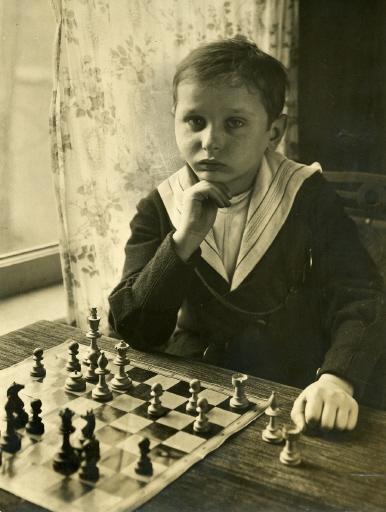
Edward Winter

Samuel Reshevsky in the Netherlands, February or March 1920 (Photograph courtesy of Michael Clapham (Ipswich, England) in C.N. 4791.)
‘To achieve world-wide fame at the age of eight is a mixed blessing. Such was my lot in life. I was a “chess prodigy” and my childhood, from the time I left my native Poland in 1920, consisted of a series of public exhibitions throughout Europe and the United States. Wherever I went, great crowds turned out to see me play. For four years, I was on public view. People stared at me, poked at me, tried to hug me, asked me questions. Professors measured my cranium and psycho-analyzed me. Reporters interviewed me and wrote fanciful stories about my future. Photographers were forever aiming their cameras at me.’
Source: Page 1 of Reshevsky on Chess by Samuel Reshevsky (New York, 1948).
On page 10 of the August 1992 Chess Life Andy Soltis wrote that Reshevsky had told a number of chessplayers that he was born in 1909, and not 1911 as commonly believed. If so, a curious (and unflattering) twist is given to the series of intelligence tests that the prodigy underwent in Berlin in 1920 at the hands of Dr Franziska Baumgarten. The latter wrote a detailed report in CHESS (14 March 1939, pages 245-246). Pages 323-324 of the 14 May 1939 issue of the same magazine reproduced the memory and geometrical tests. Dr Baumgarten, whose subject may have been over ten years old and not eight-and-a-half, reported:
‘He failed to recognise a lion, a monkey, a tiger or a camel; a fox or wolf he called a dog; a bat he called a bird .... Shown a picture of a mushroom, he said “chocolate!” – presumably on account of the colour; to a picture of a cabbage he said “tree”. He had never, so far, tried to draw, and was unable to copy even the simplest geometrical forms correctly. Moreover, though he knew that the day was a Wednesday, he had not the slightest idea of the day, month or day of the month. He did not know the names for the elementary colours red, yellow, blue. In Arithmetic, he was below standard for his age: he did not know the number 0 ...’
Unfortunately, the report omits to indicate whether Reshevsky’s mother tongue was being used. In tests on spatial visualization the boy fared much better.
‘It was in memory tests that the young Reshevsky showed the most extraordinary proficiency. He was allowed four minutes to examine 40 figures, each drawn in a special square on a sheet of paper; the paper was then removed. He was able to restate the figures without a single mistake, and in the correct order.’
Dr Baumgarten also noted that the boy was exceptional in that he declined any assistance with the tests; ‘this desire to overcome difficulties is definitely characteristic of unusually gifted children.’
(1943)
When the above item was reproduced on pages 202-203 of Kings, Commoners and Knaves a footnote added that in an interview with Hanon Russell in August 1991 Reshevsky insisted that he had indeed been born in 1911.
A further addition on page 203 of our book:
We have copies of the earlier German language versions of the Reshevsky report, as follows:
– pages 235-244 of the journal Praktische Psychologie, 8/1920;
– pages 46-59 of the book Wunderkinder Psychologische Untersuchungen by Dr Franziska Baumgarten (Leipzig, 1930).
They indicate that the tests were not conducted in Reshevsky’s mother tongue.
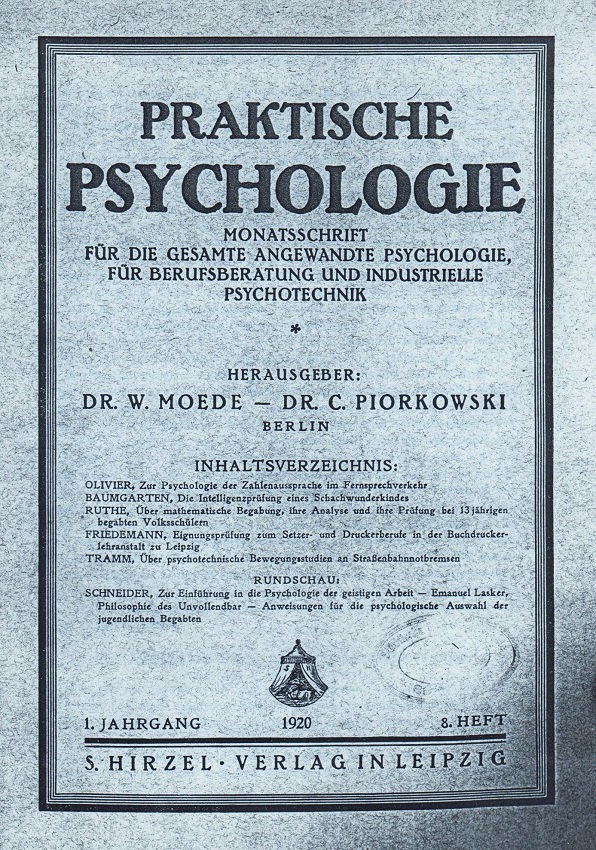
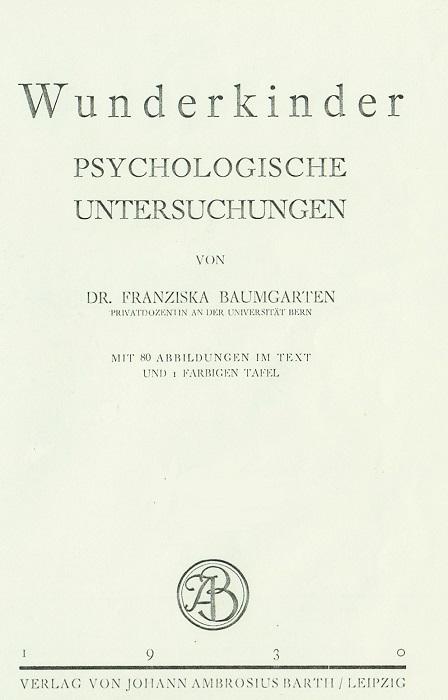
The opening page of the article on Reshevsky in the latter publication (page 46):
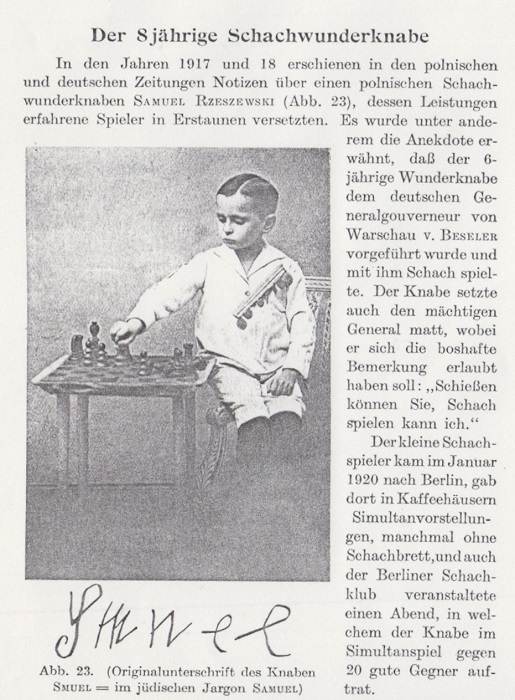
The above-mentioned introductory article by Franziska Baumgarten:
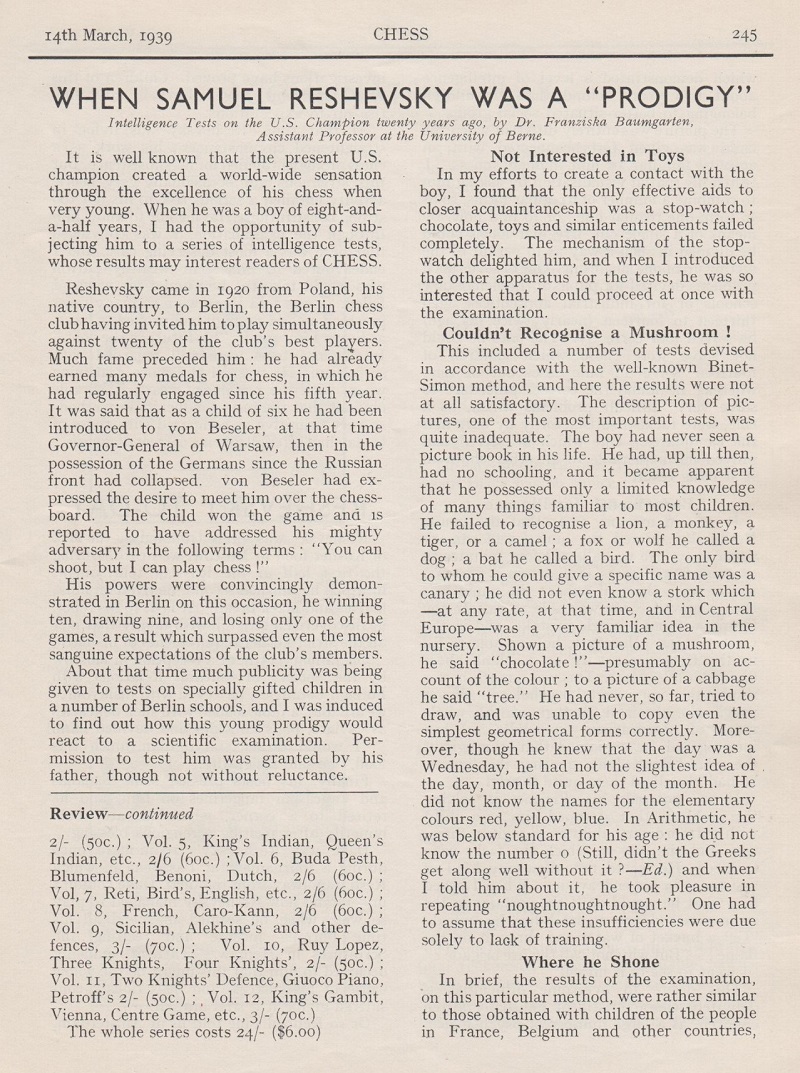
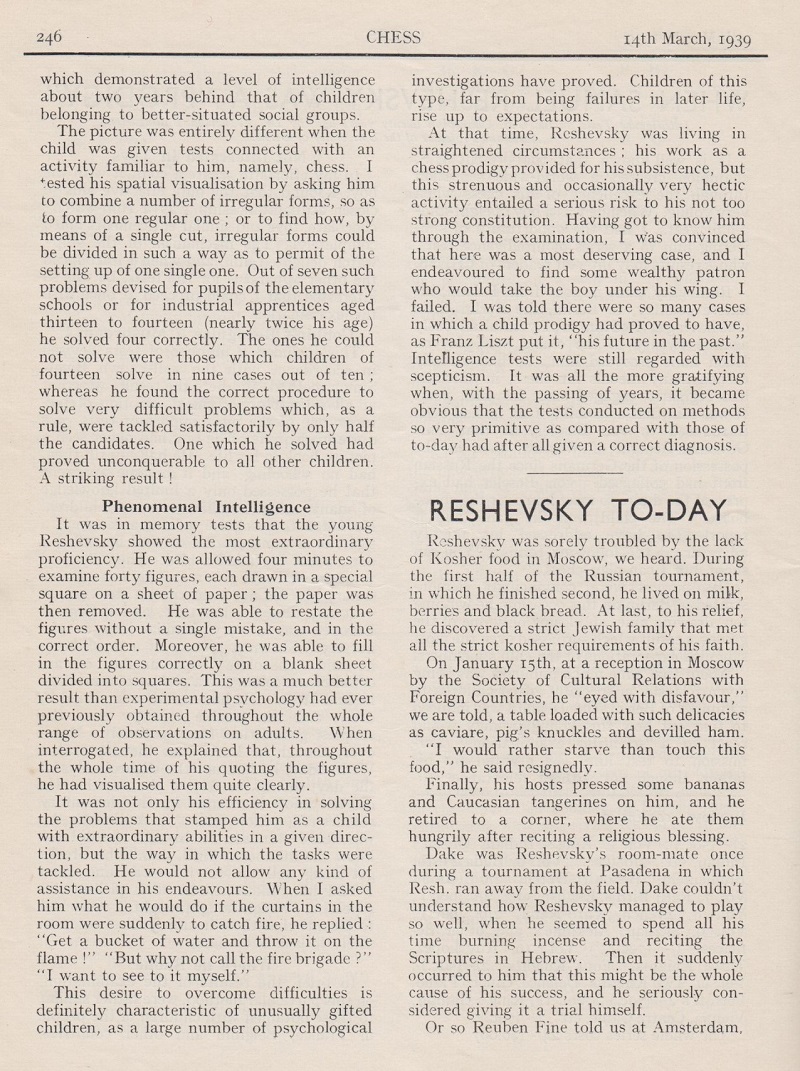
The tests as published by CHESS two months later:
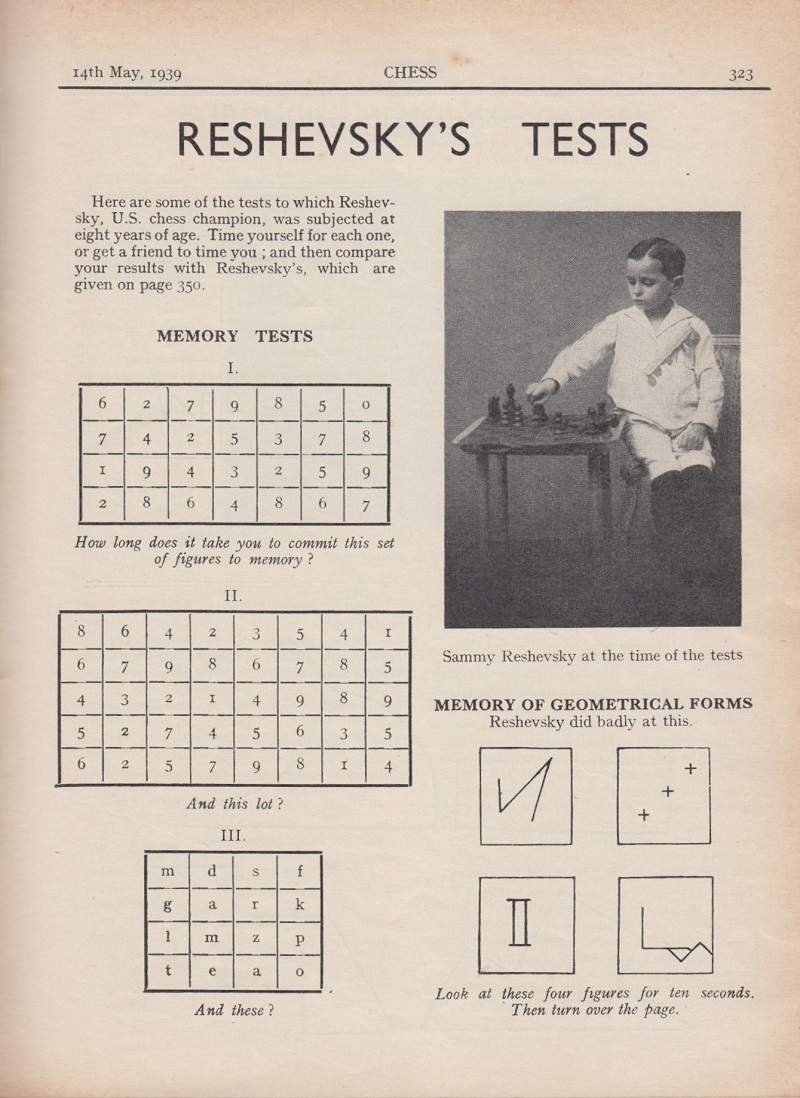
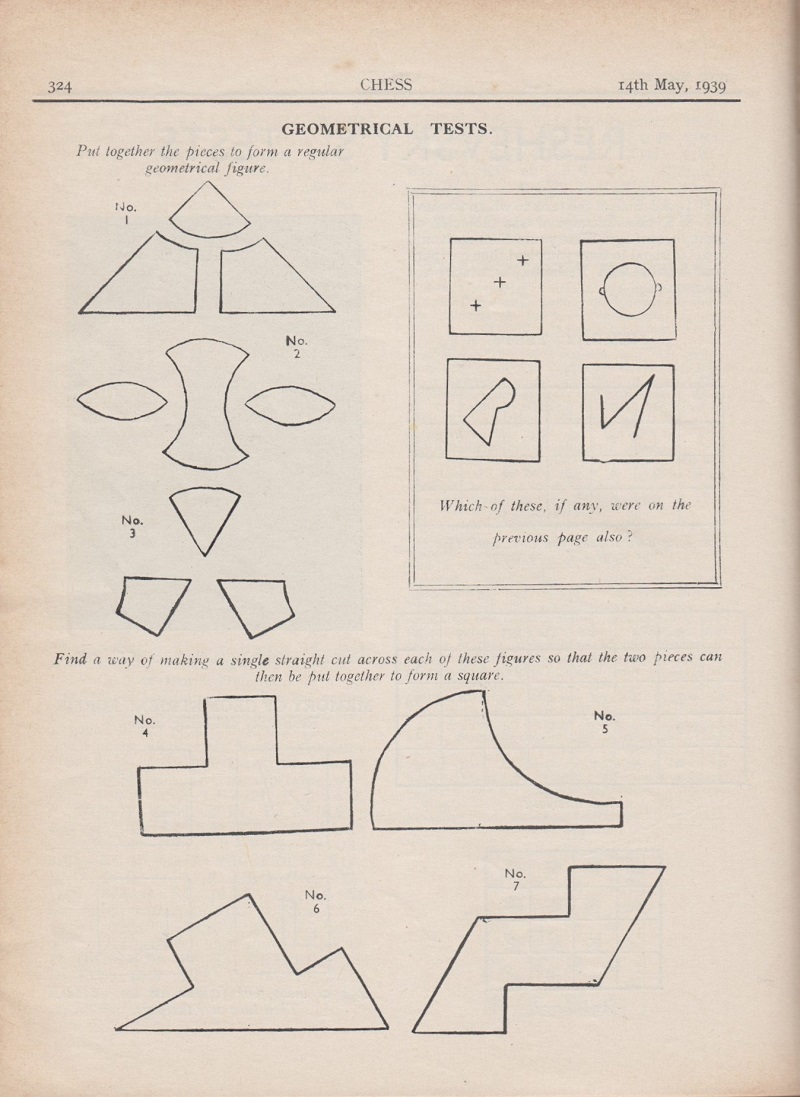
The solutions published later in the same issue of CHESS are at the end of the present article. Some discussion of the tests given to Reshevsky appeared on pages 26-27 of The Psychology of Chess by W.R. Hartston and P.C. Wason (London, 1983).
The following article comes from pages 210-211 of the November-December 1969 Schweizerische Schachzeitung:
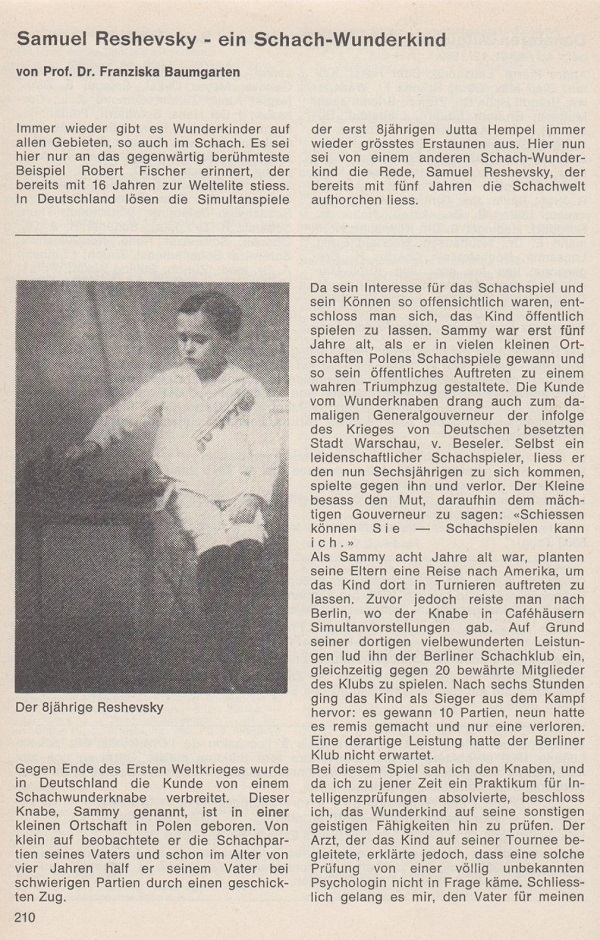
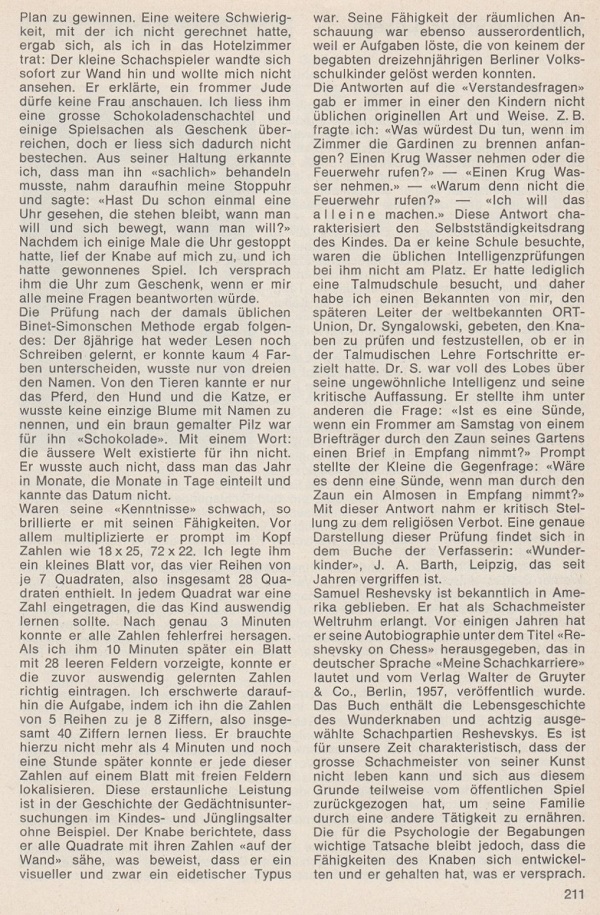
Finally, the solutions to the tests, from page 350 of CHESS, 14 May 1939:
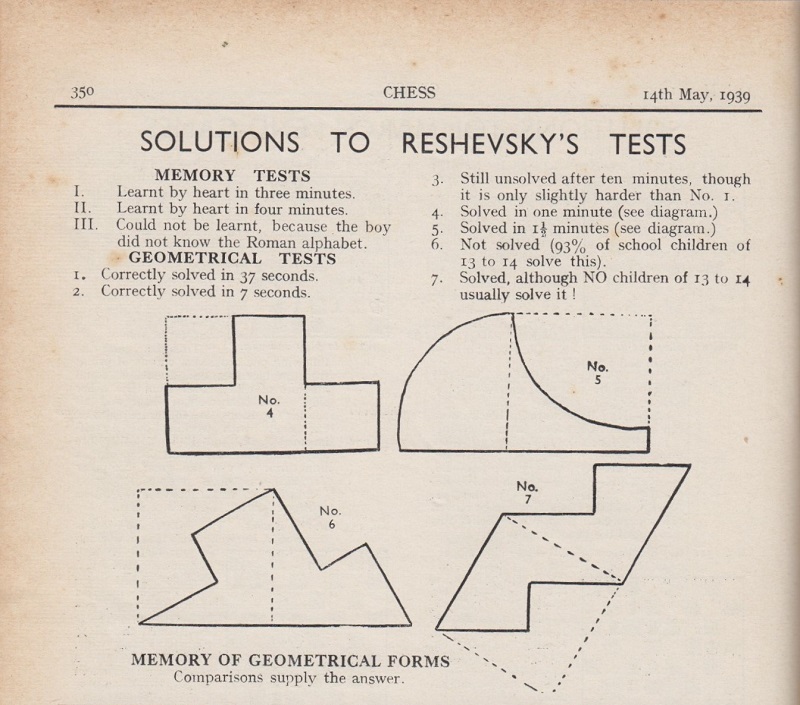
Related articles:
To the Chess Notes main page.
To the Archives for other feature articles.
Copyright: Edward Winter. All rights reserved.